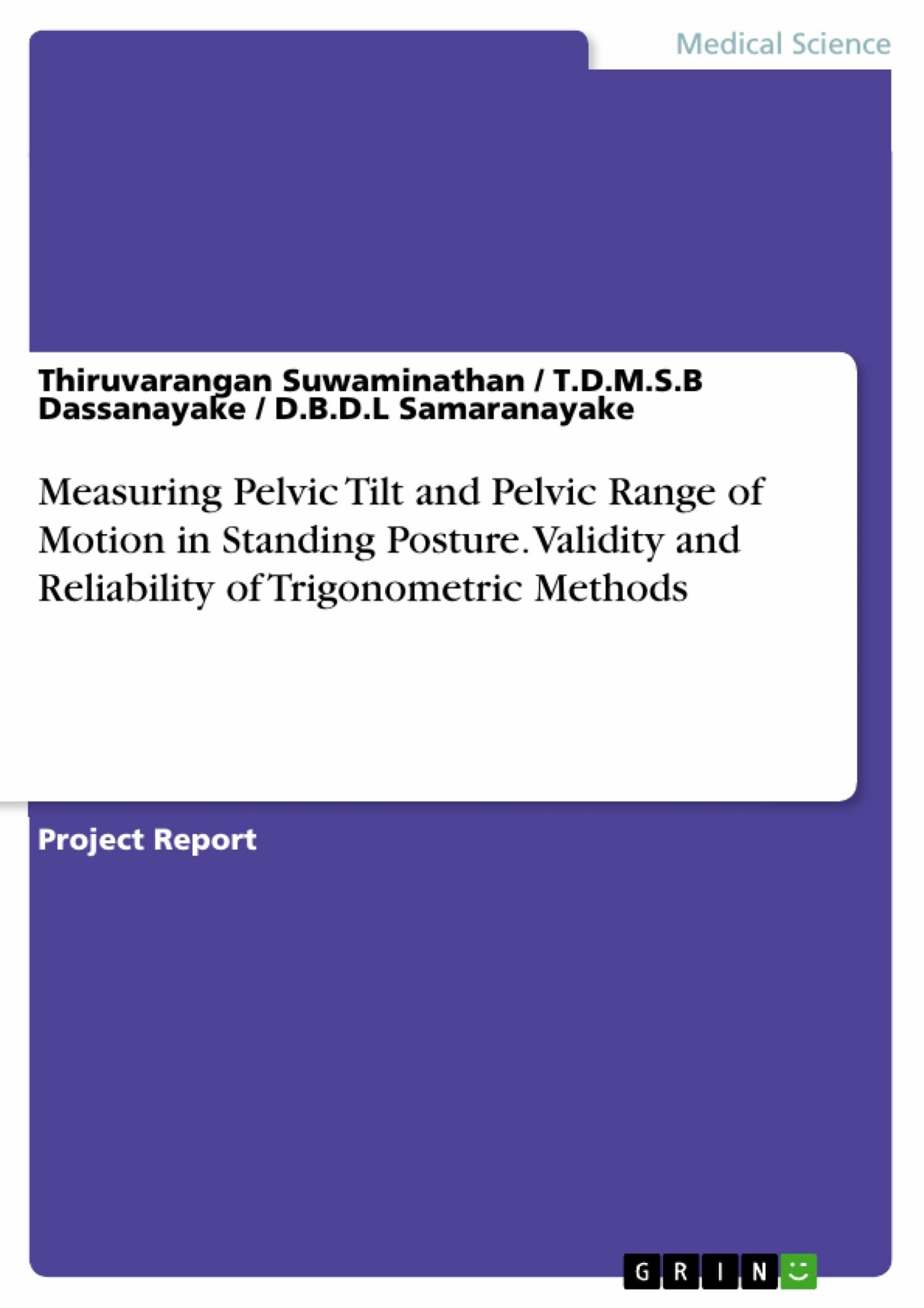Measuring Pelvic Tilt and Pelvic Range of Motion in Standing Posture. Validity and Reliability of Trigonometric Methods
| Auflage | 1. Auflage, 2017 |
| Verlag | GRIN Verlag |
| ISBN | 9783668521810 |
Sofort zum Download (Download: PDF)
Produktbeschreibung
Project Report from the year 2017 in the subject Medicine - Other, grade: Graduate, University of Colombo, course: BSc in Physiotherapy, language: English, abstract: The purpose of this study is to examine the validity and reliability of a test designed to measure the pelvic-tilt angle, active posterior and anterior pelvic-tilt angles and ranges of motion, and the total pelvic-tilt range of motion (ROM) in standing position. The pelvic tilt is the angle between the horizontal plan and a line drawn from the anterior superior iliac spine (ASIS) to the posterior superior iliac spine (PSIS) in quiet standing. It is determined by the muscular and ligamentous forces that act between the pelvis and adjacent segments. A forward rotation of the pelvis, referred to as anterior pelvic tilt, is accompanied by an increase in lumbar lordosis and is believed to be associated with a number of common musculoskeletal conditions, including low back pain. In addition, anterior pelvic tilt has been associated with a loss of core stability, and therefore the degree of pelvic tilt has been used to assess routinely therapeutic procedures that either directly or indirectly affects the standing position of the pelvic tilt in the sagittal plane by Physical therapists. The effects of the therapeutic procedure outcome measurements in physiotherapy are rarely quantified. Physical therapists need to consider clinical tests designed to provide objective and reliable pelvic-tilt data because such tests would permit documenting change in the pelvic tilt after a specific physical therapy regimen. The effects of therapeutic procedures could then be quantified and changes in the procedures could be made accordingly. Numerous techniques for measuring trunk motions in the sagittal plane have been reported in many researches. The techniques include using radiography, photography, spondylometry, flexible rules that conform to trunk curves, tape measures to record the change in centimeters between skin marks or bony landmarks and variations of goniometry.
